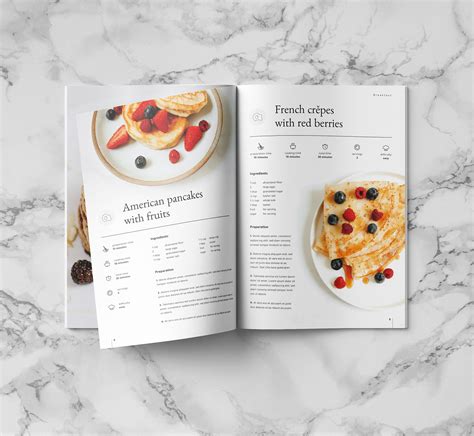JPG Recipe Book: A Deliciously Digital Culinary Companion
Creating a digital recipe book using JPG images might seem unconventional, but it offers a unique blend of visual appeal and accessibility. This guide explores the advantages, creation process, and optimization strategies for crafting a JPG recipe book that's both user-friendly and search engine optimized.
Why Choose a JPG Recipe Book?
While PDFs and other formats reign supreme for recipe collections, JPGs offer distinct benefits:
-
Visual Appeal: JPGs excel at showcasing vibrant food photography. A visually stunning recipe book can significantly enhance user engagement. Imagine mouthwatering images of your culinary creations captivating your audience!
-
Easy Sharing: JPGs are easily shared across various platforms, making distribution simple and efficient. Think social media, email, or even embedding into your website.
-
Accessibility: JPGs can be viewed on almost any device without specialized software, ensuring broad accessibility for your readers.
Crafting Your JPG Recipe Book: A Step-by-Step Guide
Creating a visually compelling and functional JPG recipe book involves careful planning and execution:
1. Recipe Selection & Organization:
-
Curate Your Collection: Choose recipes that represent your culinary style and expertise. Consider themes or categories for easier navigation. A well-organized book is easier to browse and more likely to be used.
-
Consistent Formatting: Maintain a uniform design for each recipe page. Include clear headings for recipe names, ingredients, and instructions. Consistent formatting enhances readability and the overall aesthetic.
2. Photography & Styling:
-
High-Quality Images: Invest in professional-looking food photography. Use good lighting and styling to make your dishes shine. Remember, your images are the star of the show.
-
Compelling Visuals: Consider adding close-up shots of key ingredients or steps in the process. A visually rich recipe is more engaging than one with only a single image.
3. Design & Layout:
-
User-Friendly Design: Create a clean and easy-to-read layout. Use fonts that are both legible and aesthetically pleasing. Avoid overcrowding the page with too much text or imagery.
-
Branding & Consistency: If you have a brand, integrate your logo and color scheme for a cohesive look and feel. Consistency strengthens your brand identity.
4. Optimization for Sharing and Discoverability:
-
File Naming: Use descriptive file names for your JPG images (e.g., "delicious_chocolate_cake_recipe.jpg"). This improves searchability.
-
Metadata: Add relevant keywords to your image metadata (using image editing software). Keywords help search engines index your images effectively.
-
Social Media Optimization: When sharing your JPG recipe book, use relevant hashtags to increase visibility and reach a wider audience.
Boosting Discoverability: SEO Strategies
-
Keyword Research: Identify relevant keywords related to your recipes (e.g., "easy vegetarian recipes," "gluten-free desserts," "best pasta sauce"). Integrate these keywords naturally into your image descriptions and file names.
-
Image Alt Text: Always include descriptive alt text for your images. This is crucial for accessibility and SEO. Alt text should accurately describe the content of the image, including relevant keywords.
-
Social Media Promotion: Share your JPG recipe book on relevant social media platforms and engage with your audience. Consistent engagement builds your online presence.
By following these steps, you can create a beautiful and functional JPG recipe book that is both visually appealing and easily discoverable online. Remember, a stunning visual presentation combined with effective SEO strategies maximizes your reach and audience engagement.
